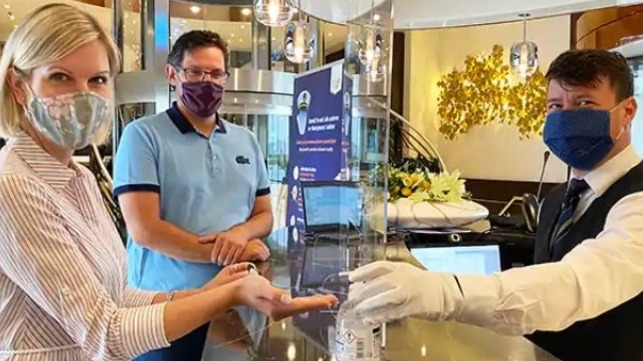CLIA Releases "Mandatory Health Protocol" for U.S. Return to Cruising

The cruise industry has begun its efforts to develop protocols for the return to service coinciding with the end of the Centers for Disease Control and Prevention’s comment period in its efforts to explore the restart of the U.S.-based cruise industry. Each of the major cruise lines released the results of their initiatives and then the trade group Cruise Lines International Association (CLIA) announced the adoption of mandatory core elements for a health protocol to be implemented as part of a phased-in, highly controlled resumption of operations.
Critics of the cruise industry’s approach had been calling for the industry to put forth a plan and be more aggressive in communicating its position. Saying it had worked with experts to synthesize the individual efforts, CLIA said its global board unanimously voted to adopt core elements for an initial restart of limited operations in the Americas and, most important, operations related to U.S. ports.
Saying that as a group it represents 95 percent of the global ocean-going cruise capacity, CLIA detailed its plan which it said it was submitting to the CDC. CLIA said that its response to the CDC also details other measures that address the entire cruise experience from booking to disembarkation.
The elements of CLIA’s plan mirror made of the steps taken by Costa Cruises, MSC Cruises, and TUI in returning their large ships to service recently in Europe and Dream Cruises with its ship sailing from Taiwan. It begins with universal testing for both passengers and crew before embarkation and calling for social distancing in the terminals, on the ships, at private island ports, and during shore excursions. In addition, requiring mask-wearing both onboard and during excursions when social distancing can not be maintained.
CLIA is also mirroring the cruise lines that resumed operations bit it said that shore excursions would be “according to the cruise operators’ prescribed protocols,” which leaves more latitude versus the large ships which so far only permit company-operated shore excursions. CLIA does say as with the operating cruise lines that passengers who do not follow the protocol would be denied re-boarding.
Two other areas the CDC has been looking at are also included in CLIA’s mandatory protocol but left broad for the cruise lines to adapt. For example, on air management CLIA cites increasing fresh air onboard, where feasible, or using enhanced filters and other technologies to mitigate risk. It also requires “risk-based response plans tailored for each ship to manage medical need.”
CLIA says that these guidelines are a mandatory starting point for all members but of course they can tailor it to their individual ships and chose to exceed any elements as they see appropriate. In addition, it says, “These core elements will be continuously evaluated and adjusted against the current state of the COVID-19 pandemic, as well as the availability of new prevention, therapeutics, and mitigation measures.”
The protocol and response to the CDC CLIA calls a critical next step for the resumption of operations in the Caribbean, Mexico, and Central America (the Americas), which encompass the largest cruise market in the world. CLIA says that initial cruises would sail on modified itineraries under stringent protocols and with support and approval of regulators and destinations, cruises could feasibly begin during the remainder of 2020.
They highlighted the support from a broad range of groups. In the prepared statement they included comments from the Prime Minister of Barbados who co-chairs the Americas Cruise Tourism Task Force, Miami-Dade County’s mayor, the president and CEO of the World Travel & Tourism Council, and representatives from the Health Sail Panel organized by Norwegian Cruise Line Holdings and the Royal Caribbean Group.

that matters most
Get the latest maritime news delivered to your inbox daily.
While the industry executives are getting more anxious to see a return to service in North America, and these efforts are designed to support that move, the industry continues to wait for action from the CDC. While officially the no sail order was scheduled to expire at the end of September, reports are that the CDC received thousands of responses. Only a small fraction has so far been released on the public website and will require the review and organization by the CDC before it can release its requirements and protocols.
CLIA and its member ocean-going cruise lines agreed as an industry in early August that they would voluntarily suspend U.S. cruise operations until at least October 31, 2020.
